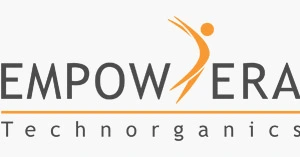It has been some time since we last discussed barrier coatings here and with the Single Use Plastic (SUP) ban now in effect in India, now is the right time to pick up where we left. Let us understand water based barrier coatings and why they are essential as we move towards the future to ensure sustainability in packaging.
What Is a Water-Based Barrier Coating?
Natural paper does not have water or oil resistance properties but sometimes for packaging applications such properties are required. Currently, plastic lamination or PE coatings are used to achieve these properties.
Water-based barrier coatings are a sustainable alternative to PE coatings / Plastics to provide water, oil & grease resistance to paper making it suitable for packaging. Such coatings comprise of a binder, waxes, fillers and additives for ease of use on high speed machines. The final product is a water-based dispersion that provides excellent water and oil resistance on paper and is approved for direct food contact. The product may be applied via air knife, meyer bar, gravure, flexo and other coating systems. The coating forms a solid hydrophobic barrier layer on paper improving its performance characteristics. The coating is free from plastic and is therefore suitable for a variety of sustainable packaging applications.
What Are Its Applications?
Barrier coatings can be used as an alternative to single use plastics. It provides the essential properties of water and oil/grease resistance to paper and enables easy and complete recycling of paper (the coating itself becomes part of paper fibers on repulping).
These coatings are safe for direct food contact and do have any impact on taste or smell of any packaged food items.
A few of the common applications for such barrier coated paper are mentioned below:
- Food packaging
- Mailer bags
- Paper pouches
- Disposable food packaging
- Disposable food trays
- Disposable cutlery
- Food wrappers
- Ice cream boxes
- Microwaveable food packs
How Are Such Coatings Applied?
The water-based barrier coatings are in liquid form and are thus applied in a different mechanism compared to current coating agents made from plastics such as PE, etc. For plastic based coating agents, they are first heated and melted to create a liquid and then applied over paper in layers. Water-based barrier coatings are already in liquid form and no pre-heating or melting is required.
The aqueous solution is applied over paper in a thin layer. The paper is then passed through drying chamber so that the water evaporates. Once the water evaporates, the paper becomes hydrophobic and oil resistant and can hold either without any leakages.
The technique of application is important for water-based barrier coatings. The thickness of the coating will have a direct impact on the final performance of coated paper. As some of the coating will be absorbed in to the paper, it is essential to have a complete layer of coating on paper to ensure water and oil resistant properties.
Are They Safe for Food Contact?
Our products have been tested by Internationally recognized laboratories to ensure no harmful impact comes to food on direct contact with this coating. For more information, please feel free to get in touch with us!
What Are the Other Alternatives?
Plastic film lamination and PE extrusion coatings have been used widely and for many years to provide barrier properties to paper. However, in in order to reduce plastics in packaging, water-based barrier coatings are an excellent alternative as they provide ease of application, good performance and complete repulpability and recyclability. Some other alternatives are bio-based plastics such as PLA, PBS, etc. which can also be used for similar applications.
Why Use Water-Based Barrier Coatings?
PE coated papers have been widely used for packaging where water and oil resistant properties were required. However, PE coated paper cannot be recycled with other paper products because PE coating first needs to be separated from paper. Even on machines where such separation is possible, the process is not smooth, requires a lot of maintenance and is overall a waste of resources. While there is technology to recycle PE coated paper, it is expensive and not widely available. Most such PE coated paper ultimately lands up in landfills.
Water based products, on the other hand, do not need to be recycled in separate facilities or have cumbersome recycling processes. They can be recycled along with other paper products in recycling plants worldwide. They are more sustainable, plastic-free and eco-friendly than most other coating materials. These benefits make water-based barrier coatings one of the best alternatives to current plastic coated paper.
Further, water-based barrier coatings are extensively tested and have been found to be safe for direct food contact and do not alter the taste or smell of food in any way.
Awareness among recyclers, consumers, and businesses can genuinely help water based barrier coatings reach its true potential and bring meaningful change. It has some of the best benefits in terms of paper coating, and awareness among people can help make it the standard of barrier coated paper in the future.
We, along with our families, are the end users for barrier coated paper and it is up to us to take a moment to ask companies what containers they are using to serve us our favourite food or delivering the products we order. Together we can help companies make a meaningful change towards sustainability and eco-friendly products.
Our sustainable portfolio coverage on Printweek can be found here.
For more information about our solutions, feel free to get in touch with us!





